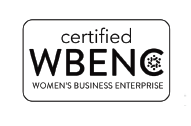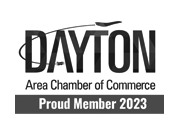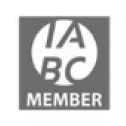Memorable corporate storytelling (what every CEO wants more of)
 When is a corporate story more than just a story?
When is a corporate story more than just a story?
When it’s conceived and written with purpose: to help a CEO advance his or her top priorities for the organization.
This month I ran a little experiment by reviewing corporate stories written for an organizational client over the last 16 months.
I wanted to take an after-the-fact, 60,000-foot-view to learn the different ways these corporate stories had advanced an organizational goal or tackled a strategic objective.
What I learned surprised me.
Each of the 21 stories analyzed could easily be classified into one of 10 unique categories. Altogether, these 10 categories revealed the many different ways that memorable corporate storytelling — done well — can move an organization forward.
Here’s what I discovered about the benefits of corporate storytelling when corporate stories are conceived and written with purpose.
Memorable corporate storytelling can:
1. Spark or reinforce a change
This category included four of the 21 stories analyzed:
- “Update: digital commerce pilot — Onboarding, training continue; more product data being added,” which maintained momentum for a new digital transformation effort by sharing positive experiences from employees and customers already using the pilot system
- “Automated inventory management: More local companies signing on as Stock 360 enters Phase 2.0,” which revealed new tools for promoting and selling a relaunched program for locking in loyal, profitable customers – and the payoff that would likely result
- “Say goodbye to filing, storing paperwork: Document Indexing in WISE on Browser saves space, time,” which told a user’s success story to convey the benefits of a new automated system (the goal: to convince other users to change how they were filing and storing documents)
- “More shifts, more scheduled deliveries: Many local companies getting orders faster, more frequently from Sourcing Services,” which showed how two new initiatives — suggested by people in the field and then implemented by the organization — were helping companies compete better in their local markets
Here’s my question for people in corporate storytelling:
Are you telling memorable stories that persuade others to make a change (based on a new program or initiative) or show the impact of a change?
2. Spread good ideas that improve how a company does business
 This category included three of the 21 stories analyzed:
This category included three of the 21 stories analyzed:
- “Don’t wait until there’s a slowdown to stress test your business,” which asked five questions to help companies reduce expenses now, before an economic downturn might force them to slash expenses quickly (these questions prompted decision makers to consider a service to streamline their tasks and administrative expenses permanently)
- “Moving a local company — Best-laid plans pan out at Riverside Winnelson: Smooth moves are possible if you plan early, communicate often — and get help,” which shared best practices for moving via a 12-month timeline story of a company’s move (the goal: to encourage others to not wait until the last minute before planning a move)
- “Joint planning now can boost sales in 2019: 10 tips to help distributors, reps build more business together,” which gave new ideas for getting strategic plans done and implemented quickly for more sales and deeper strategic partnerships by year-end
Here’s my question for people in corporate storytelling:
Are you telling memorable stories that capture good ideas from employees that can be shared to improve how your company does business?
3. Build culture and community
This category included three of the 21 stories analyzed:
- “APCO Inc. acquisition: Michigan local company ready for more growth with Winsupply,” which reinforced the organization’s founding philosophy of helping to build entrepreneurs and reiterated the many ways the acquisition company had been helped thanks to the Winsupply culture
- “Tacoma Electric Supply: a Winsupply company — Recession comeback was hard-won; acquired company set to grow margin,” which described how the organization’s longtime business model made it a best fit with a new acquisition: an electrical company determined to keep its team intact
- “Thomas Pipe & Supply acquisition: Winsupply now has a strong PVF presence in Arizona and beyond,” which described how an outsider who learned about the organization saw the cultural compatibility with his company, agreed to be acquired and is now enjoying new opportunities
Here’s my question for people in corporate storytelling:
Are you telling memorable stories that confirm what you stand for as an organization?
4. Allow peers to influence peers (by changing people’s minds)
 This category included three of the 21 stories analyzed:
This category included three of the 21 stories analyzed:
- “How do you value a National Sales customer? Tom Weinrich counts the ways,” which dispelled myths and shared surprising results to convince peers that the value of this program far outweighs its cost
- “7 reasons why Denver Winair is buying more than ever from Sourcing Services,” which revealed the respectful give-and-take partnership between a leader and a service provider and the mutual benefits each had received by adopting this mindset (the goal: to persuade peers to do the same)
- “Online recruiting is fast, affordable: Winchester Noland finds great hires in 2 weeks for less than 50 bucks,” which shared how companies are using online tools to quickly and cost-effectively hire employees in a tight labor market (the goal: to convince other leaders that traditional hiring methods may not work as well anymore)
Here’s my question for people in corporate storytelling:
Are you telling memorable stories from the perspective of peers to encourage others to “get on the bandwagon”?
5. Ignite innovation
This category included two of the 21 stories analyzed:
- “Carmel Winwater: Calling on sister companies to help source, make and deliver products outside the box,” which told how three companies applied a can-do attitude to collaborate and deliver unique products to a customer that they could have never delivered on their own
- “Randy Marcello, Baton Rouge Noland: Growing fast? Here are 12 ways to keep service from slipping,” which allowed a company president to share discoveries he’d made to keep customer service at the highest possible levels — on par with sales — in the midst of rapid growth
Here’s my question for people in corporate storytelling:
Are you telling memorable stories that inspire others throughout your organization to come up with their own innovative ideas?
 6. Help employees discover new ways to grow
6. Help employees discover new ways to grow
This category included two of the 21 stories analyzed:
- “ASA Women in Industry event helps develop women as leaders in wholesale distribution,” which described how a professional woman attending an industry conference was inspired to begin a master’s program and earn her degree in two years (the goal: to inspire other women who want to advance in a male-dominated industry)
- “Relationship reboot — Eddie Gibbs: Better rapport will keep distributors, reps relevant as wholesaling changes,” which recapped how certain leaders were building trust and working better together to remain relevant in a changing marketplace (the goal: to provide proof to others that “you can do this, too”)
Here’s my question for people in corporate storytelling:
Are you telling memorable stories that motivate employees to change their behavior so they can provide more value to the organization?
7. Move the company’s mission forward
This category included one of the 21 stories analyzed:
- “Presidents who had big shoes to fill are now taking their local companies to the next level,” which shared how three budding entrepreneurs took over for three longtime company presidents — and then won achievement awards for their financial performance and were recognized as successful entrepreneurs
Here’s my question for people in corporate storytelling:
Are you telling memorable stories that show how your organization is fulfilling its purpose?
8. Get everyone on the same page
This category included one of the 21 stories analyzed:
- “As equity partners, what does it mean to maintain a fair balance of interests?” which clarified the meaning of a founding principle of the organization to help employees make the right decisions every day to maintain fair balance, required for sustaining the organization in the future
Here’s my question for people in corporate storytelling:
Are you telling memorable stories that provide clarity about where the organization is headed so that everyone in the organization is moving in the same direction?
 9. Give people the courage to take risks
9. Give people the courage to take risks
This category included one of the 21 stories analyzed:
- “Bryan ‘Dale’ Reinhard was driven to ‘figure it out’ at Albuquerque Windustrial,” which told about a rookie businessman who applied what he’d learned as an officer in the Army to make a failing business profitable again after only one year
Here’s my question for people in corporate storytelling:
Are you telling memorable stories that show how others did something that required bravery — and succeeded — to motivate others to do the same?
10. Make the complex simple
This category included one of the 21 stories analyzed:
- “IT Infrastructure goes well beyond network ops: Seven specialty teams keep local companies up and running,” which gave a simple breakdown of seven groups within the organization’s IT department, whose breadth of services and support had been misunderstood in the past
Here’s my question for people in corporate storytelling:
Are you telling memorable stories tackling difficult subjects that employees need to understand to function well within the organization?
What you can do next
If you are a corporate storyteller, run your own little experiment.
Take a look at the corporate stories you’ve told over the last year or so.
Classify them into one of the 10 categories listed above, or add a couple categories of your own.
Then ask yourself three questions about your own corporate storytelling:
- Are my stories conceived and written with purpose: to advance my organization’s top priorities?
- How many different ways is my corporate storytelling being used to advance an organizational goal or tackle a strategic objective?
- Are my corporate stories benefiting my organization by moving the organization forward in some way?

















